Hyundai i30 Wagon vs Mercedes C-Class Wagon – Which car suits you better?
Two cars, one duel: Hyundai i30 Wagon meets Mercedes C-Class Wagon.
Which one wins in performance, efficiency and value for money? Find out now!
Costs and Efficiency:
Looking at overall running costs, both models reveal some interesting differences in everyday economy.
Hyundai i30 Wagon has a convincingly advantage in terms of price – it starts at 24800 £, while the Mercedes C-Class Wagon costs 42400 £. That’s a price difference of around 17594 £.
Fuel consumption also shows a difference: Mercedes C-Class Wagon manages with 0.40 L and is therefore significantly more efficient than the Hyundai i30 Wagon with 5.70 L. The difference is about 5.30 L per 100 km.
Engine and Performance:
Power, torque and acceleration are the classic benchmarks for car enthusiasts – and here, some clear differences start to show.
When it comes to engine power, the Mercedes C-Class Wagon has a clearly edge – offering 680 HP compared to 140 HP. That’s roughly 540 HP more horsepower.
In acceleration from 0 to 100 km/h, the Mercedes C-Class Wagon is convincingly quicker – completing the sprint in 3.40 s, while the Hyundai i30 Wagon takes 9.80 s. That’s about 6.40 s faster.
In terms of top speed, the Mercedes C-Class Wagon performs evident better – reaching 280 km/h, while the Hyundai i30 Wagon tops out at 197 km/h. The difference is around 83 km/h.
There’s also a difference in torque: Mercedes C-Class Wagon pulls convincingly stronger with 1020 Nm compared to 253 Nm. That’s about 767 Nm difference.
Space and Everyday Use:
Beyond pure performance, interior space and usability matter most in daily life. This is where you see which car is more practical and versatile.
Both vehicles offer seating for 5 people.
In curb weight, Hyundai i30 Wagon is noticeable lighter – 1316 kg compared to 1755 kg. The difference is around 439 kg.
In terms of boot space, the Hyundai i30 Wagon offers slightly more room – 602 L compared to 490 L. That’s a difference of about 112 L.
In maximum load capacity, the Hyundai i30 Wagon performs slight better – up to 1650 L, which is about 140 L more than the Mercedes C-Class Wagon.
When it comes to payload, Mercedes C-Class Wagon hardly perceptible takes the win – 565 kg compared to 524 kg. That’s a difference of about 41 kg.
Who comes out on top?
Overall, the Mercedes C-Class Wagon shows itself to be dominates this comparison and secures the title of DriveDuel Champion.
It convinces with the more balanced overall package and proves to be the more versatile choice for everyday use.
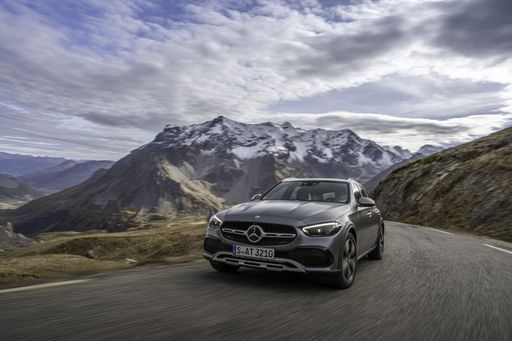
Mercedes C-Class Wagon
Hyundai i30 Wagon
The Hyundai i30 Wagon offers a blend of practicality and style, making it a popular choice for families and those in need of extra space. Its sleek exterior and comfortable interior provide a pleasant driving experience, while advanced safety features ensure peace of mind on the road. The i30 Wagon stands out with its impressive fuel efficiency and reliability, catering to both urban and rural lifestyles.
details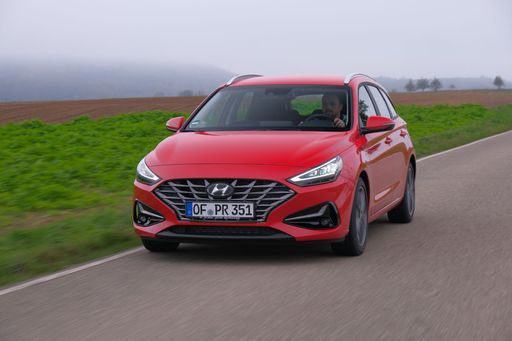 @ hyundai.news
@ hyundai.news
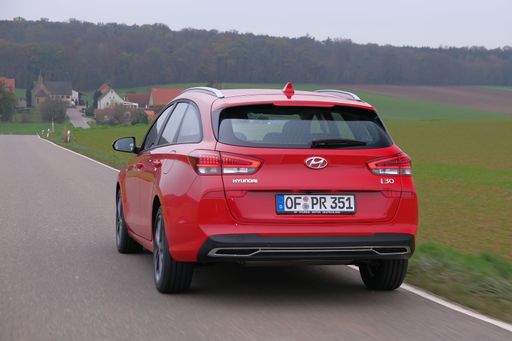 @ hyundai.news
@ hyundai.news
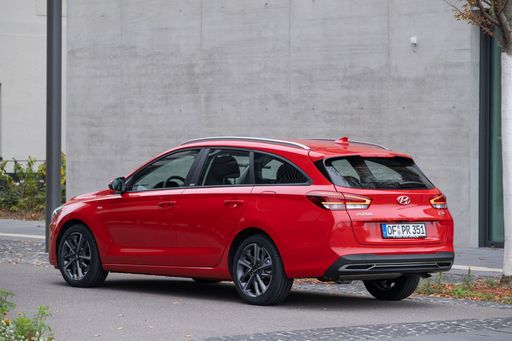 @ hyundai.news
@ hyundai.news
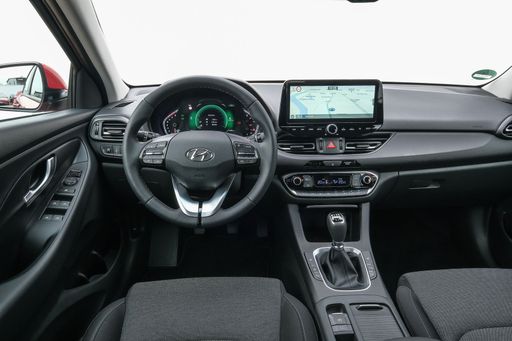 @ hyundai.news
@ hyundai.news
 @ hyundai.news
@ hyundai.news
Mercedes C-Class Wagon
The Mercedes-Benz C-Class Wagon offers a perfect blend of luxury and practicality, appealing to those who value both style and functionality in their vehicle. Its elegant design is complemented by a spacious and versatile interior, making it ideal for family trips or business travel. With advanced safety features and state-of-the-art technology, this estate car provides a driving experience that is both secure and enjoyable.
details @ group-media.mercedes-benz.com
@ group-media.mercedes-benz.com
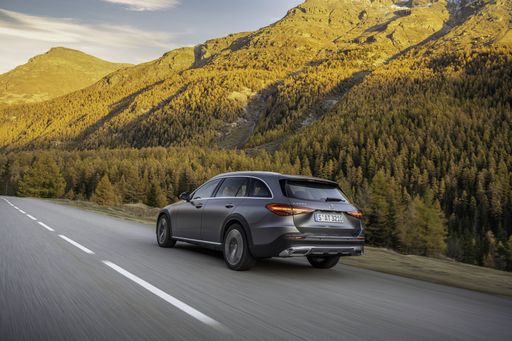 @ group-media.mercedes-benz.com
@ group-media.mercedes-benz.com
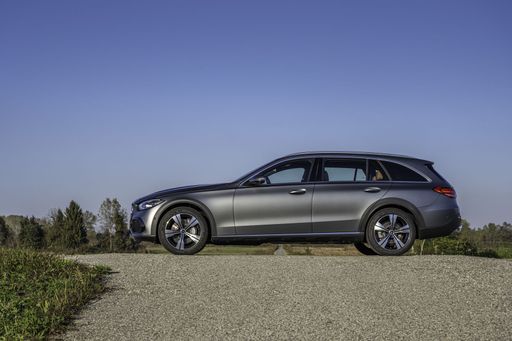 @ group-media.mercedes-benz.com
@ group-media.mercedes-benz.com
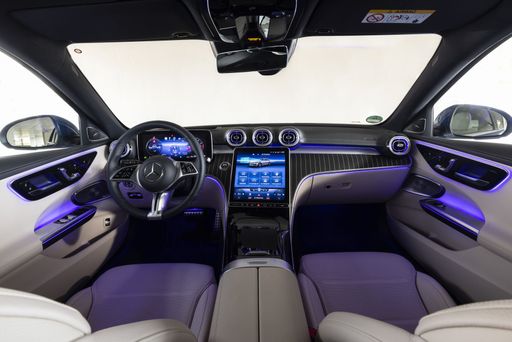 @ group-media.mercedes-benz.com
@ group-media.mercedes-benz.com
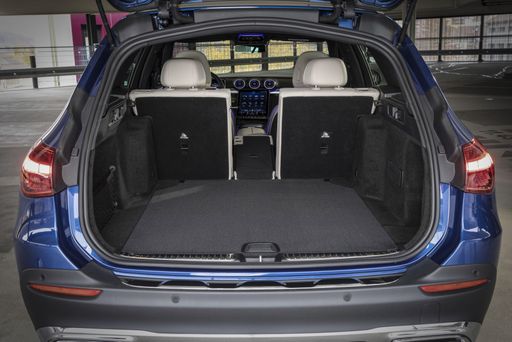 @ group-media.mercedes-benz.com
@ group-media.mercedes-benz.com

|

|
|
|
|
Costs and Consumption |
|
|---|---|
|
Price
24800 - 30100 £
|
Price
42400 - 115300 £
|
|
Consumption L/100km
5.7 - 6 L
|
Consumption L/100km
0.4 - 9 L
|
|
Consumption kWh/100km
-
|
Consumption kWh/100km
-
|
|
Electric Range
-
|
Electric Range
11 - 112 km
|
|
Battery Capacity
-
|
Battery Capacity
19.50 kWh
|
|
co2
130 - 136 g/km
|
co2
11 - 206 g/km
|
|
Fuel tank capacity
50 L
|
Fuel tank capacity
40 - 66 L
|
Dimensions and Body |
|
|---|---|
|
Body Type
Estate
|
Body Type
Estate
|
|
Seats
5
|
Seats
5
|
|
Doors
5
|
Doors
5
|
|
Curb weight
1316 - 1461 kg
|
Curb weight
1755 - 2235 kg
|
|
Trunk capacity
602 L
|
Trunk capacity
360 - 490 L
|
|
Length
4585 mm
|
Length
4751 - 4842 mm
|
|
Width
1795 mm
|
Width
1820 - 1900 mm
|
|
Height
1475 mm
|
Height
1454 - 1494 mm
|
|
Max trunk capacity
1650 L
|
Max trunk capacity
1375 - 1510 L
|
|
Payload
439 - 524 kg
|
Payload
440 - 565 kg
|
Engine and Performance |
|
|---|---|
|
Engine Type
Petrol, Petrol MHEV
|
Engine Type
Petrol MHEV, Plugin Hybrid, Diesel MHEV
|
|
Transmission
Manuel, Automatic
|
Transmission
Automatic
|
|
Transmission Detail
Manual Gearbox, Dual-Clutch Automatic
|
Transmission Detail
Automatic Gearbox
|
|
Drive Type
Front-Wheel Drive
|
Drive Type
Rear-Wheel Drive, All-Wheel Drive
|
|
Power HP
100 - 140 HP
|
Power HP
186 - 680 HP
|
|
Acceleration 0-100km/h
9.8 - 13.3 s
|
Acceleration 0-100km/h
3.4 - 8.8 s
|
|
Max Speed
178 - 197 km/h
|
Max Speed
226 - 280 km/h
|
|
Torque
172 - 253 Nm
|
Torque
250 - 1020 Nm
|
|
Number of Cylinders
3 - 4
|
Number of Cylinders
4
|
|
Power kW
74 - 103 kW
|
Power kW
137 - 500 kW
|
|
Engine capacity
998 - 1482 cm3
|
Engine capacity
1496 - 1999 cm3
|
General |
|
|---|---|
|
Model Year
2024
|
Model Year
2024 - 2025
|
|
CO2 Efficiency Class
D, E
|
CO2 Efficiency Class
E, F, G, B, D
|
|
Brand
Hyundai
|
Brand
Mercedes-Benz
|
What drivetrain options does the Hyundai i30 Wagon have?
Available configurations include Front-Wheel Drive.
The prices and data displayed are estimates based on German list prices and may vary by country. This information is not legally binding.
